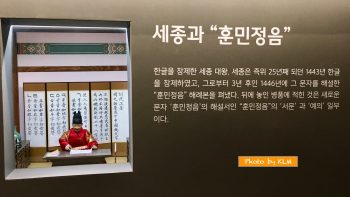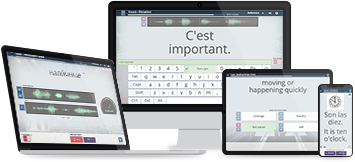The Scientific and Phonetic Korean Script, 한글(Hangeul) #1 Posted by Kyung-Hwa on Jul 19, 2017 in Grammar, Korean Language
Are you familiar with the Korean script called, 한글 (Hangeul)? If you are interested in building fluency in Korean, especially in reading and writing, this series of posts will help you in understanding and learning the structure of 한글. This post will cover a brief history of 한글 and how to form syllables in Korean. The next series will cover several interesting facts and detailed explanations of Korean consonants and vowels.

The Korean alphabet, 한글 (Hangeul) was created by King Sejong in 1443. 한글 was originally called 훈민정음 (Hunminjeongeum), which stood for, “correct sounds to instruct the people.” Before the creation of 훈민정음, Koreans borrowed Chinese characters to transliterate Korean sounds, and this method was not always comparable. Thus, King Sejong wanted to invent an alphabet system that was suitable for the Korean language, and a system that people could learn to read and write easily.
How many letters are in 한글?
Currently, there are total of 19 consonants and 21 vowels in the Korean language. Generally speaking, you will learn the first14 consonants and 10 vowels in red and blue listed below. The next post will cover more detailed information on Korean consonants and their sounds.
- 19 consonants are the following:
ㄱㄴㄷㄹㅁㅂㅅㅇㅈㅊㅋㅌㅍㅎ ㄲㄸㅃㅆㅉ
- 21 vowel
ㅏ ㅑ ㅓ ㅕ ㅗ ㅛ ㅜ ㅠ ㅡ ㅣ ㅐ ㅒ ㅔ ㅖ ㅘ ㅙ ㅚ ㅝ ㅞ ㅟ ㅢ
How do I structure a syllable in Korean?
A group of characters represent a single syllable, and each syllable has a squarish look. Like English you write from left to right. However unlike English, you always start a syllable with a consonant. There are two different combinations of syllables, either C (consonant) + V (vowel) or C (consonant) + V (vowel) + C (consonant) such as in the following examples:
ex)
- C + V 가 : ㄱ(consonant ) + ㅏ(vowel)
or
C 수 : ㅅ (consonant)
+ +
V ㅜ (vowel)
- C + V + C 한 : ㅎ(consonant) +ㅏ(vowel) + ㄴ (consonant)
or
C 국 : ㄱ (consonant)
+ +
V ㅜ (vowel)
+ +
C ㄱ (consonant)
Don’t forget to check out my next series of articles, which contains detailed information about Korean consonants and vowels.
I hope this article will help to guide you in your understanding of the Korean script, 한글. If you are interested in gaining a more in-depth knowledge of 한글, 국립한글박물관 (The National Hangeul Museum) would be an excellent place to visit. This article, “한글: The Journey of the Korean Script” has information on 국립한글박물관 (The National Hangeul Museum).
감사합니다! (Thank you!)

Build vocabulary, practice pronunciation, and more with Transparent Language Online. Available anytime, anywhere, on any device.




Comments:
Marielle Vargas:
Its so nice to read and to understand??
Kyung-Hwa:
@Marielle Vargas 안녕하세요. (Hello.)
I am excited to hear your commnent because my goal is to write an article that people can read and understand.
Thanks for your kind words.
감사합니다 ^___^ (Thank you ^___^)
Fabian Sylivester:
as mentioned above i would like to leave a message of appreciations for any of the details provided in my e mail to make me be one family within Hangul culture society.
I like learning Korean although it has been very difficult due to the reason that i don’t get these materials daily but i am enjoying.
I am from Dar es salaam Tanzania East Africa can you imagine now how far i am and how to get a better and comfortable environment of learning.
waiting to hear from you
Kyung-Hwa:
@Fabian Sylivester 안녕하세요. (Hello.)
Wow, the power of the internet is amazing, and I am glad that we are part of it.
I am happy to hear that you are reading my articles and studying Korean in Dar es Salaam, one of the fastest growing city in the world.
I hope you will continue to enjoy studying Korean.
감사합니다!!! (Thank you!!!)
Uma:
Thanks for the efforts. It’s extremely useful. Consistent transliteration character (hangeul) by character(roman) may help more.
Kyung-Hwa:
@Uma 안녕하세요,
I am exicted to hear that this article is useful to you.
Enjoy studying Korean ^^
감사합니다! (Thank you!)